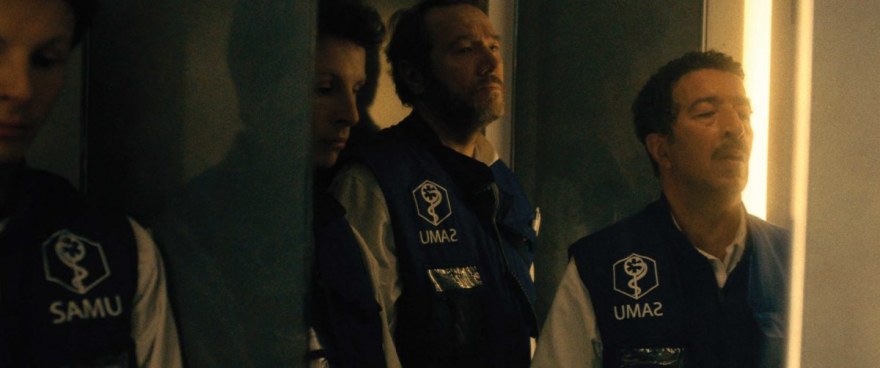Dinner with Mort aux codes [To Hell with Codes]
An interview with Léopold Legrand, director of Mort aux codes [To Hell with Codes]
How did you learn about Patrick Pelloux’ book? Does it describe the absurdity of the situation precisely as the emergency crew tells it or did you take some liberties to adapt it to the screen?
In 2016 Frederic Brillon, producer at Epithète Films, advised me to read Toujours là, toujours prêt. He found that the different stories were meaningful and impactful. To Hell with Codes poses the question of ultra-security. No digital door-code can prevent death from entering our apartments, but it can considerably slow down the first-responders progress. My adaptation consisted in creating characters, choosing an angle, inventing the pace. From the original collection of stories, I kept the events and the tone.
Did you undertake any research among emergency rescuers to prepare for shooting?
I worked with the emergency services of Rambouillet while writing and then while preparing to shoot. In order not to make up nor caricature the operations, I needed to feel the urgency, to grasp the attitudes, the vocabulary, the energy. During the shooting, an emergency fireman was present to help specify the right gestures and to insure we had the realism that I wanted in the film.
Are you interested in thrillers in particular? What attracted you to working on this genre?
I’m not particularly interested in thrillers, but I like it when the tension builds. WithMort aux codes, I wanted to examine urgency. I was very excited about the idea of a film in real time, with no ellipsis. I felt, for the story to be touching, the viewer had to be confronted with the first-responders’ sense of urgency and the succession of door-codes. There had to be a radical angle (that of the first-responders) and a camera and sound-take that were immersed and full of suspense. It quickly became apparent that a sequence-shot was necessary, and it was a wonderful challenge to set it up. In fact, it was very enjoyable to create a ballet between the technical team and the actors in order to provoke emotion (in fact, stress) for the viewer.
What interested you in the final scene, once the rescue intervention was over?
I was afraid that Mort aux codes might be moralizing because too anecdotal. Of course, the film takes a look at the absurdity of confinement and the danger of isolation, but I wanted to try to honor the people whose job it is to rescue us. The last scene, more day to day, allows us to realize the routine, to focus on the men and women, to look beyond the uniform.
Would you say that the short film format has given you any particular freedom?
I like shorts because they oblige us to be fundamental, to dare to make a narrative or a formal proposal. Many feature length films shoot a scene with a descriptive camera which doesn’t recount much while sticking to the story. The short format doesn’t allow that and relies undeniably on the staging. My obsession with To Hell with Codes was to hold a pace and to work the off-camera. I was convinced that if I mastered these two elements, the urgency would become contagious and the door-codes terribly frustrating. I’ll let you tell me if I succeeded.
Mort aux codes [To Hell with Codes] is being shown in the National Competition F12 and in the Program for Schools









